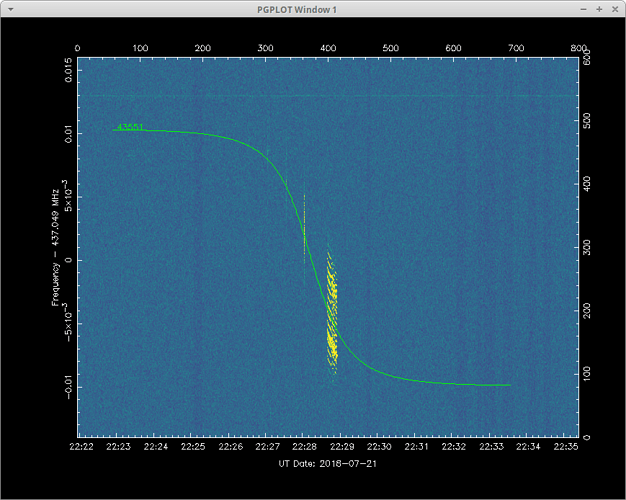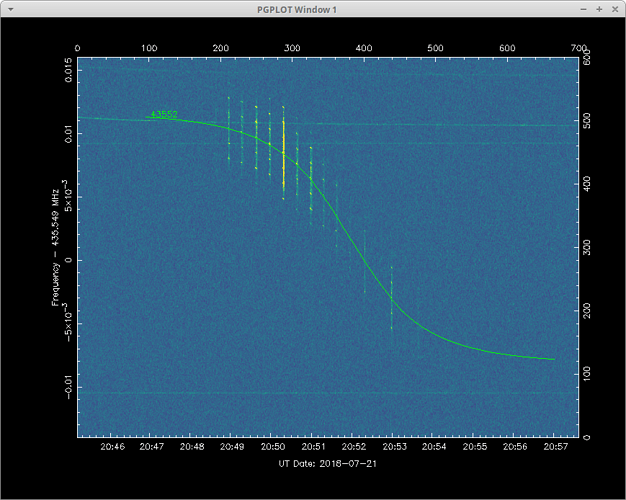You made great job . Your eco system is really incredible. I’m looking forward to contribute to it. I’m expecting more nice surprises from EnduroSat ONE in next days.
Hi @cshields and @KD9KCK, regarding EQUiSat’s decoding we use “Transparent EOT.” We were hoping that would be decodable by conventional 4FSK decoders but we haven’t gotten any to work. Someone contacted us interested in trying to write a decoder in GNU radio, but he is currently on vacation. He got pretty far initially, and said that he determined the FSK offsets to be -2400Hz, -800Hz, 800Hz and 2400Hz. He was also able to identify periodicity in the data he was getting (we were sending “EQUiSat” over and over). Though Pacific Crest has also told us that the data is not fully “transparent;” there are some headers and checksums and other overhead in a transmission.
I personally plan on working on this starting in August (this is Mckenna, the tech lead of BSE), as I’ve always hoped for EQUiSat’s transmissions to be decodable by the HAM radio community in software!
I might try my hand at manual decoding it. As 4FSK can spit out symbols then you need to figure out the framing. (I think)
Hi @KD9KCK
That would be great, we’d love the help! If you’re interested, I have a few testing recordings of the radio here. Sorry for the mega site, I haven’t had a chance to re-upload them to Google Drive. I think the names are fairly self-explanatory but let me know if you have questions regarding what data we transmitted.
Also, if you’d like to try and decode packets, our message format is here. A good thing to look for is the header callsign, WL9XZE or 574c39585a in hex (unfortunately our frequency coordination came too late for us to get an Amateur callsign).
And that’s a good point on the framing, we assumed it was 00 to 11 from low to high frequency, but I imagine they may have swapped it around.
Thanks,
Mckenna
I am assuming the .raw files are I/Q recordings?
@KD9KCK Yeah, they’re I/Q recordings taken with GQRX, so they’re in the GNU radio format.
@fredy looks good based on:
https://network.satnogs.org/observations/187084/
In Audacity, I can see 10 high speed packets besides the two easily visible low speed packets. It is hard to see anything besides the high speed packets on the Audio tab on the website.
Both EQUiSat and EnduroSat One were heard on another UHF bandscan overnight. EQUiSat is now best matched to object 43552/98067PA, and EnduroSat One to 43551/98067NZ. During my previous bandscan these objects were close together leading to the different identification. Now, they have separated significantly.
None of the other July 13 objects were heard during 6 passes.
Thanks, that explains!
I recorded ENDURASAT1 this night using TLE for 43552 and saw the doppler corrected signal change 1500 Hz up and down during the passage.
BTW, Beethovens 9th has a slight fading, periode is appr. 1.2 sec, I guess the sat is rotating…
Great analysis @cgbsat!
Wondering if you can get on the diagrams both 43551 and 43552 lines. I am curious to see in this phase what is the difference. If it is much trouble, no problem. 
I have updated TLEs in network and now EQUISAT uses 43552 and ENDUROSAT uses 43551. RADSAT-G and MEMSAT define with 43553 TLE without any evidence just testing.
Here’s two comparisons of frequency/time measurements of a single Doppler curve against predictions from TLEs.
You’ll see on the right hand side that the rms (root mean square) residuals of the fit are 81Hz for object 43552 and 270Hz for object 43551. The time-of-closest-approach (TCA) is also different by 9 seconds, so the satellites are now 9 seconds apart on the sky, which is why, from the residuals, the satellite can be identified.
Blast from the past…
We have some possible identifications for the last two objects of this deployment, specifically 44553 should be RADSAT-G and the remaining one, 44554, should be MEMSAT. For more details check this post Observation 1459855: RADSAT-G (99963).
After some more observations RADSAT-G is now identified as OBJECT PB (43553). However nothing received from MEMSAT, so it will still remain with its temporary NORAD ID and will follow TLE for 43554.



